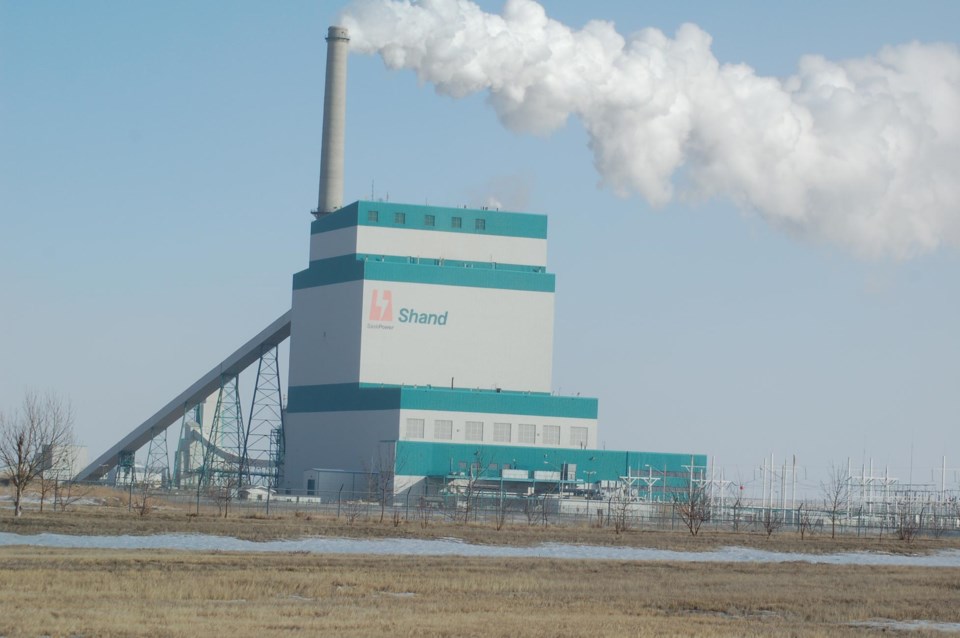SaskPower's sidekick project to the Boundary Dam No. 3 Unit clean coal project is gaining regional, national and international attention on its own merits.
The Shand Power Station's $64 million test facility, like the BD3 project, is nearing completion said SaskPower president and CEO Robert Watson in a telephone interview on Feb. 7.
The 30-metre high desorber and absorber vessels are in place, and the project is moving ahead within budget. The costs are being shared between SaskPower and Hitachi, the company that built the two large vessels and has earned the right to be the first company allowed to use the test facility for up to 12,000 hours according to the agreement. The two corporations are sharing the construction and commissioning costs 50:50.
There has been a lot of interest being expressed by companies and countries that want to use the Shand test facility for their own experiments. The plant will offer a useful six megawatts of commercial grade power for testing activities.
"There has been specific and direct interest from several sectors and we will reveal who they are when we can," said Watson.
The interest in Shand has come from a variety of groups that consist of manufacturers to chemical and power production industries.
They all will want to gather information on collecting varieties of noxious gases.
The intellectual properties that each company gets from their tests at Shand, will belong to them.
Watson said, however, that if any country or company cares to partner up with SaskPower for certain tests they would be open to discussion and negotiation if they felt the resulting exposure to additional information could benefit SaskPower and the citizens of Saskatchewan.
SaskPower officials noted that the test facility while costing $64 million may become a feature for positive cash flow once it becomes operational and the Hitachi portion of the contracted time is completed. Company officials speculated that Shand's test facility could come at a cost of about $50,000 per day for those wishing to use it to test their own systems to capture carbon dioxide and other noxious gases using various combinations of amines and other chemicals.
Anyone wanting to use coal as the base fuel, will be able to access Shand's test facility for the price and perhaps, take the industry beyond the technology that is being implemented at the Boundary Dam pilot site to be used for future carbon capture programs.
In the meantime, BD3 is pretty well on stream already with an official launching date slated for April. Carbon dioxide is being captured now, said Watson, since the construction phase is complete in the $1.34 billion project that has attached itself to Boundary's Unit No. 3 which is capable of pumping out about 110 megawatts of electrical power in a completely rebuilt generator and housing unit.
"We'll get past the winter crunch and we're eyeing April for the official commissioning. We are through all the difficult issues already and taking a measured approach. We don't gain anything by rushing into the launch," Watson said.
The CEO then added that it is clear to SaskPower that coal will be used for fuelling a good portion of the province's electrical supply for decades to come as will the process of collecting the gases from coal plants. The company will continue to explore all other avenues for clean power supplies but there is no big expectation of a "major flip-over to other clean power supplies. Companies and regulators are still looking at fossil fuels," he said. "So we clearly see a longer term for coal. We'll get this unit up and running, take a couple of years to assess things technically and financially, then look at moving forward."
Watson added that the signing of an agreement with Cenovus, the oil production company that will be taking most or all of the carbon dioxide gas emitted and captured at Boundary Dam for enhanced oil recovery practices in the nearby oil fields, makes the BD3 project a more cost-effective model.
"We understand there is a strong market for more CO2 in Saskatchewan," he said.
Major users of coal-fired plants to produce electricity, like China, have definitely expressed interest in the Saskatchewan project, the first in the world to deploy carbon dioxide capture on a commercial scale.
"The Chinese have been here. We've met their major decision-makers and discussed a lot of things with them. We've also played host to visitors from India, Thailand, Britain, Norway, Poland, United Arab Emirates and others. It was direct interest, governments and industry. This is a first for the world and that's a very clear fact," Watson.
In the meantime, the fact also remains that the Shand test facility is a lot more than just icing on the cake. Its environmental, industrial and economic model is also huge.




